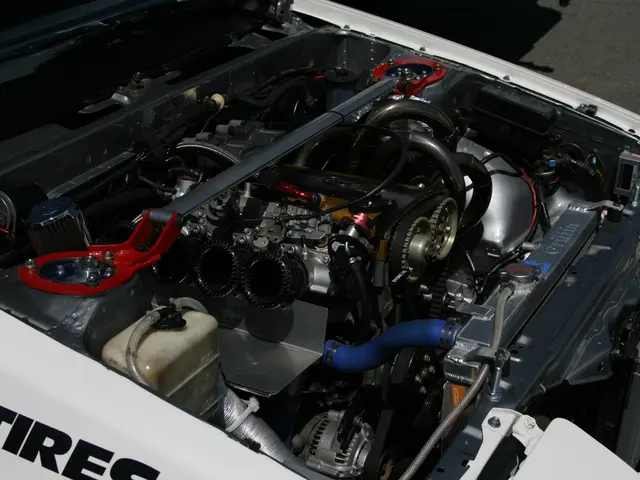Discover Over 8,000 Blueprints to Craft Tomorrow's Automotive Marvels: Kickstart Your Dream Car Design Journey Today!
In the speedy, closed-door world of car design, some innovative MIT engineers are shaking things up with DrivAerNet++, an expansive open-source dataset of over 8,000 realistic car designs, each packed with detailed aerodynamics information. This dataset is the first of its kind and has the potential to revolutionize the automotive industry by bringing design advancements to the forefront at a record pace.
Aiming to bridge the gap between siloed car data and powerful yet idle AI tools, this team set out to create a comprehensive, easily accessible trove of car design data. To do so, they began with baseline 3D models provided by Audi and BMW, representing various common passenger car shapes. Using a series of morphing operations and mathematical manipulations, the researchers generated new car designs, ensuring that each was unique and physically accurate in terms of its aerodynamics. These designs were then translated into several representational formats, including mesh, point cloud, and dimension-based lists, making them adaptable for various AI models.
Next, the researchers swept through 3 million CPU hours using the MIT SuperCloud to run complex simulated fluid dynamics calculations for each generated car design, resulting in the visualization of airflow around the designs. The entire operation spilled out over 39 terabytes of data, a colossal amount compared to the entire printed collection of the Library of Congress.
With DrivAerNet++ now at their fingertips, researchers can leverage it to enhance machine learning models. One application would involve training a model to learn car configurations that exhibit optimal aerodynamics and generate similar designs with minimal effort. Alternatively, a trained model could quickly estimate a design's aerodynamics based on a given car design, effectively simulating physical testing and saving both time and resources.
Speed is the name of the game for this breakthrough in car design, as it has the potential to significantly reduce fuel consumption for internal combustion vehicles and extend the electric range of electric cars. This acceleration paves the way for a cleaner, more sustainable, and environmentally friendly automotive future.
Manpreet Baria, a senior machine learning research scientist at Toyota Research Institute, expressed appreciation for the initiative, stating, "DrivAerNet++ is extremely comprehensive and offers a valuable range of modalities to understand both styling and performance."
The development of DrivAerNet++ has been made possible through funding from the German Academic Exchange Service and the Mechanical Engineering Department at MIT.
[1] DrivAerNet++: A Comprehensive and Multimodal Dataset for Advancing Vehicle Design[2] DoMINO: A Neural Operator Framework for Automotive AerodynamicsSource: MIT News
- This expansive open-source dataset, DrivAerNet++, is revolutionizing the automotive industry by accelerating car design advancements with over 8,000 realistic car designs, each containing detailed aerodynamics information.
- The goal of creating DrivAerNet++ was to bridge the gap between siloed car data and idle AI tools, resulting in a comprehensive, easily accessible trove of car design data.
- Researchers can now leverage DrivAerNet++ to enhance machine learning models and quickly estimate a design's aerodynamics, effectively simulating physical testing and saving time and resources.
- Manpreet Baria, a senior machine learning research scientist at Toyota Research Institute, appreciated the initiative, stating, "DrivAerNet++ is extremely comprehensive and offers a valuable range of modalities to understand both styling and performance."
- The development of DrivAerNet++ has been made possible through funding from the German Academic Exchange Service and the Mechanical Engineering Department at MIT.
- The potential of DrivAerNet++ extends beyond the automotive industry, as it could also have implications for environmental-science, climate-change research, and even lifestyle choices like car-maintenance and the adoption of electric-vehicles.
- As DrivAerNet++ speeds up car design, it has the potential to significantly reduce fuel consumption for internal combustion vehicles and extend the electric range of electric cars, contributing to a cleaner, more sustainable, and environmentally friendly future.
- To the public, this technological innovation holds promise for a more efficient and eco-friendly automotive sector, potentially leading to improved fuel efficiency, extended electric ranges, and reduced carbon footprints.
- The advancements brought about by DrivAerNet++ underscore the importance of public-private partnerships and cross-disciplinary collaborations in sparking innovation and solving pressing challenges, such as climate-change and sustainable living.
- As we learn more about the impact of DrivAerNet++ on the automotive industry and broader environmental problems, it serves as a reminder that technological breakthroughs can play a crucial role in shaping our world and the mental models through which we view and engage with our environment.







